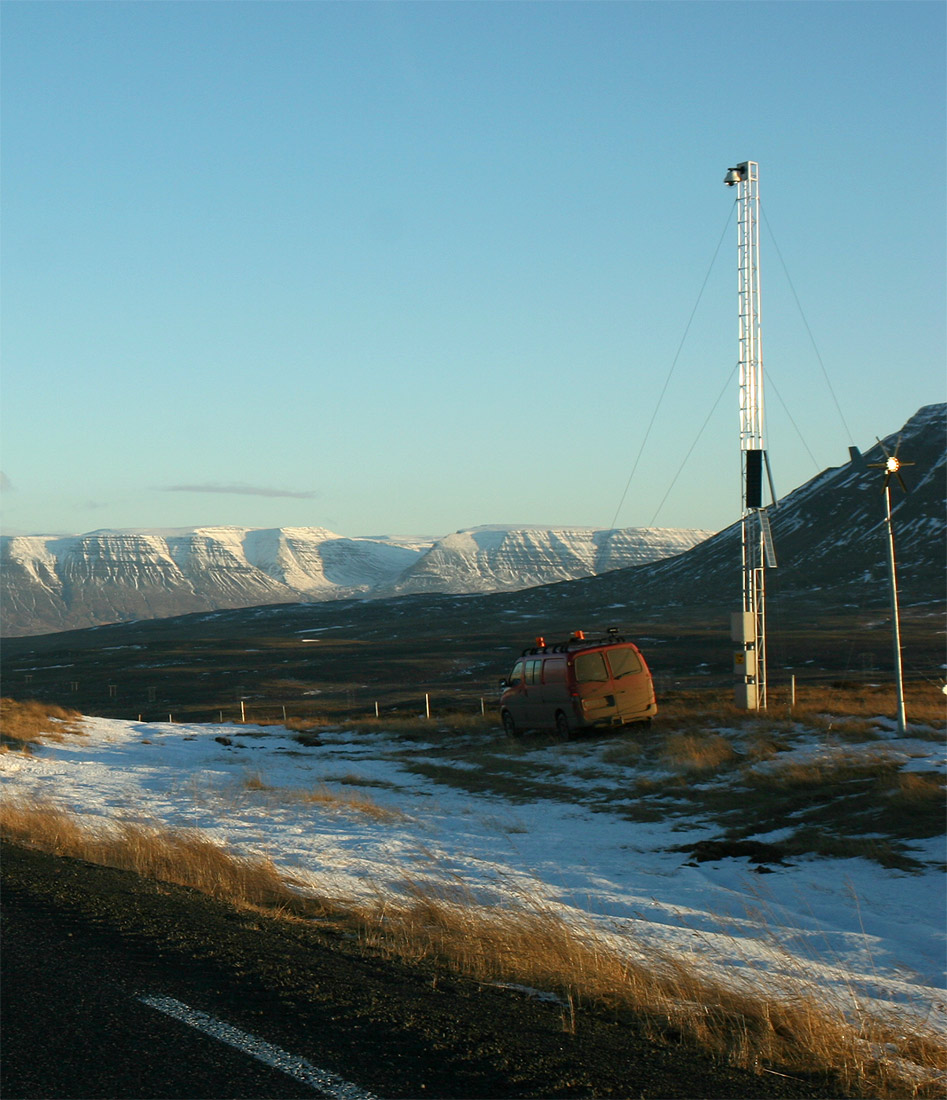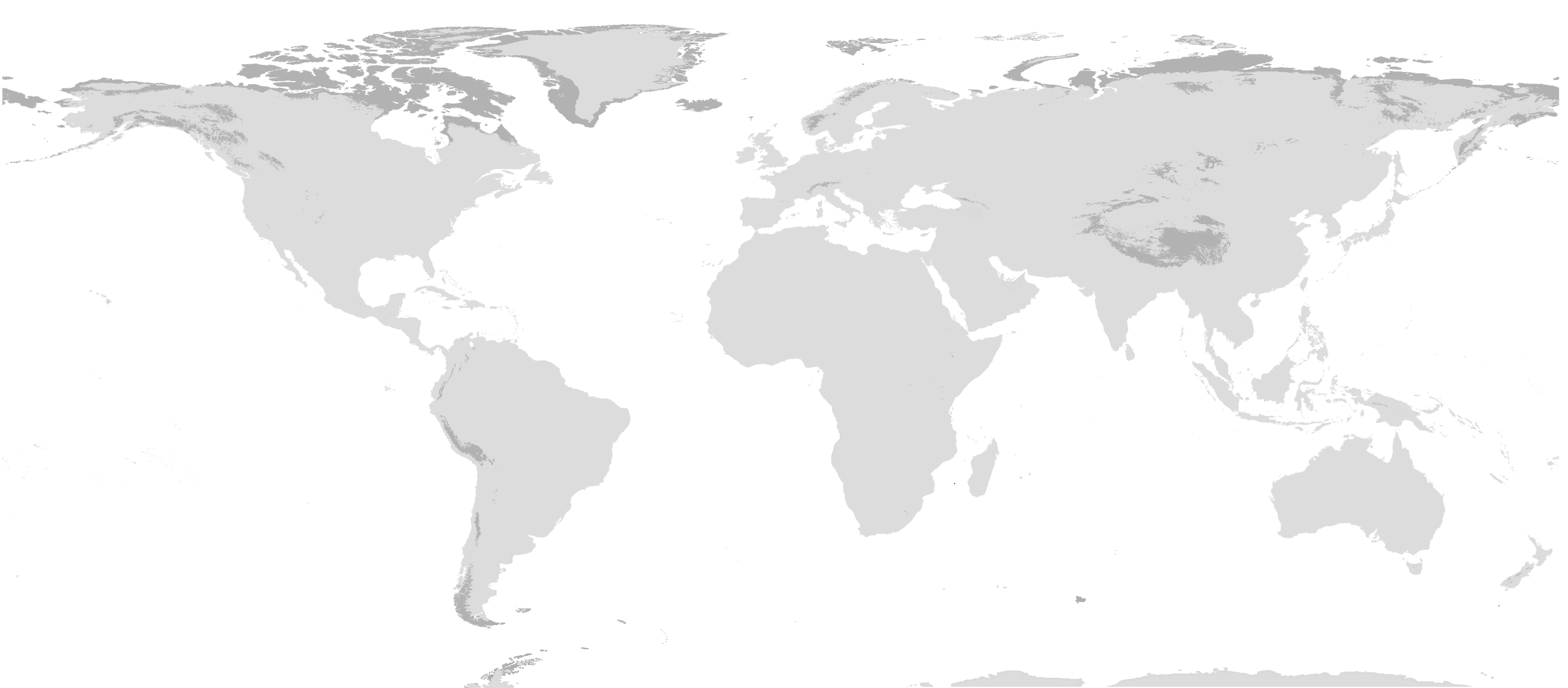|
Mývatn
() is a shallow lake situated in an area of active volcanism in the north of Iceland, not far from Krafla volcano. It has a high amount of biological activity. The lake and the surrounding wetlands provides a habitat for a number of waterbirds, especially ducks. The lake was created by a large basaltic lava eruption 2300 years ago, and the surrounding landscape is dominated by volcanic landforms, including lava pillars and rootless vents (pseudocraters). The effluent river is known for its rich fishing for brown trout and Atlantic salmon. The name of the lake ( Icelandic ("midge") and ("lake"); "the lake of midges") comes from the large numbers of midges present in the summer. The name is sometimes used not only for the lake but the whole surrounding inhabited area. The river , the lake and the surrounding wetlands are protected as a nature reserve (the – Nature Conservation Area, which occupies ). Since the year 2000, a marathon around the lake takes place in the ... [...More Info...] [...Related Items...] OR: [Wikipedia] [Google] [Baidu] |
Pseudocrater
A rootless cone, also formerly called a pseudocrater, is a volcanic landform which resembles a true volcanic crater, but differs in that it is not an actual vent from which lava has erupted. They are characterised by the absence of any magma conduit which connects below the surface of a planet. Rootless cones are formed by steam explosions as flowing hot lava crosses over a wet surface, such as a swamp, a lake, or a pond. The explosive gases break through the lava surface in a manner similar to a phreatic eruption, and the tephra builds up crater-like forms which can appear very similar to real volcanic craters. Well known examples are found in Iceland such as the craters in the lake Mývatn (''Skútustaðagígar''), the Rauðhólar in the region of the capital city Reykjavík or the ''Landbrotshólar'' of South-Iceland's Katla UNESCO Global Geopark near Kirkjubæjarklaustur. Rootless cones have also been discovered in the Athabasca Valles region of Mars, where lava flows superh ... [...More Info...] [...Related Items...] OR: [Wikipedia] [Google] [Baidu] |
Rootless Vents
A rootless cone, also formerly called a pseudocrater, is a volcanic landform which resembles a true volcanic crater, but differs in that it is not an actual vent from which lava has erupted. They are characterised by the absence of any magma conduit which connects below the surface of a planet. Rootless cones are formed by steam explosions as flowing hot lava crosses over a wet surface, such as a swamp, a lake, or a pond. The explosive gases break through the lava surface in a manner similar to a phreatic eruption, and the tephra builds up crater-like forms which can appear very similar to real volcanic craters. Well known examples are found in Iceland such as the craters in the lake Mývatn (''Skútustaðagígar''), the Rauðhólar in the region of the capital city Reykjavík or the ''Landbrotshólar'' of South-Iceland's Katla UNESCO Global Geopark near Kirkjubæjarklaustur. Rootless cones have also been discovered in the Athabasca Valles region of Mars, where lava flows superh ... [...More Info...] [...Related Items...] OR: [Wikipedia] [Google] [Baidu] |
Krafla
Krafla () is a volcanic caldera of about 10 km in diameter with a 90 km long fissure zone. It is located in the north of Iceland in the Mývatn region and is situated on the Iceland hotspot atop the Mid-Atlantic Ridge, which forms the divergent boundary between the North American Plate and the Eurasian Plate. Its highest peak reaches up to 818 m and it is 2 km in depth. There have been 29 reported eruptions in recorded history. Overview Iceland is a place where it is possible to see plate tectonics at work. It sits astride the Mid-Atlantic Ridge; the western part of the island nation is part of the roughly westward-moving North American plate, while the eastern part of the island is part of the roughly eastward-moving Eurasian Plate. The north–south axis of the Mid-Atlantic Ridge splits Iceland in two, roughly north to south. Along this ridge many of Iceland's most active volcanoes are located; Krafla is one of these. Krafla includes the crater Víti, one ... [...More Info...] [...Related Items...] OR: [Wikipedia] [Google] [Baidu] |
Iceland
Iceland ( is, Ísland; ) is a Nordic island country in the North Atlantic Ocean and in the Arctic Ocean. Iceland is the most sparsely populated country in Europe. Iceland's capital and largest city is Reykjavík, which (along with its surrounding areas) is home to over 65% of the population. Iceland is the biggest part of the Mid-Atlantic Ridge that rises above sea level, and its central volcanic plateau is erupting almost constantly. The interior consists of a plateau characterised by sand and lava fields, mountains, and glaciers, and many glacial rivers flow to the sea through the lowlands. Iceland is warmed by the Gulf Stream and has a temperate climate, despite a high latitude just outside the Arctic Circle. Its high latitude and marine influence keep summers chilly, and most of its islands have a polar climate. According to the ancient manuscript , the settlement of Iceland began in 874 AD when the Norwegian chieftain Ingólfr Arnarson became the first p ... [...More Info...] [...Related Items...] OR: [Wikipedia] [Google] [Baidu] |
Höfði (park)
Höfði () is a house in Reykjavík, Iceland, best known as the location for the 1986 Reykjavík Summit meeting of President Ronald Reagan of the United States and General Secretary Mikhail Gorbachev of the Soviet Union. This meeting was an important step towards ending of the Cold War. Within the building, the flags of the United States and the Soviet Union are cross-hung to commemorate the meeting. History The house was built in 1909 and is located at Félagstún. It was initially built for the French consul Jean-Paul Brillouin in Iceland, and was the exclusive residence of poet and businessman Einar Benediktsson (1864-1940) for twelve years (1913-1925). From 1925 to 1937 painter Louisa Matthíasdóttir grew up in the house since her family resided there. In the 1940s and 1950s, it was home to the Embassy of the United Kingdom, Reykjavík, British Embassy in Reykjavík. The city of Reykjavík purchased the house in 1958, and restored it. From then on it has been used for forma ... [...More Info...] [...Related Items...] OR: [Wikipedia] [Google] [Baidu] |
Icelandic Meteorological Office
Icelandic Meteorological Office (IMO; is, Veðurstofa Íslands) is Iceland's national weather service and as such a government agency under the Ministry of Environment and Natural Resources. It is also active in volcano monitoring, esp. volcano seismology, and, together with other institutions, responsible for civil protection in IcelandMission. About the Icelandic Meteorological Office. (28.5.2010) Retrieved 18 August 2020. Aims and functions "The research focus of IMO is on and ,[...More Info...] [...Related Items...] OR: [Wikipedia] [Google] [Baidu] |
Tundra Climate
The tundra climate is a polar climate sub-type located in high latitudes and high mountains. undra climate https://www.britannica.com/science/tundra-climateThe Editors of Encyclopaedia Britannica, 2019 It is classified as ET according to Köppen climate classification. It is a climate which at least one month has an average temperature high enough to melt snow (), but no month with an average temperature in excess of . Despite the potential diversity of climates in the ''ET'' category involving precipitation, extreme temperatures, and relative wet and dry seasons, this category is rarely subdivided. Rainfall and snowfall are generally slight due to the low vapor pressure of water in the chilly atmosphere, but as a rule potential evapotranspiration is extremely low, allowing soggy terrain of swamps and bogs even in places that get precipitation typical of deserts of lower and middle latitudes. The amount of native tundra biomass depends more on the local temperature than the amoun ... [...More Info...] [...Related Items...] OR: [Wikipedia] [Google] [Baidu] |
Köppen Climate Classification
The Köppen climate classification is one of the most widely used climate classification systems. It was first published by German-Russian climatologist Wladimir Köppen (1846–1940) in 1884, with several later modifications by Köppen, notably in 1918 and 1936. Later, the climatologist Rudolf Geiger (1894–1981) introduced some changes to the classification system, which is thus sometimes called the Köppen–Geiger climate classification system. The Köppen climate classification divides climates into five main climate groups, with each group being divided based on seasonal precipitation and temperature patterns. The five main groups are ''A'' (tropical), ''B'' (arid), ''C'' (temperate), ''D'' (continental), and ''E'' (polar). Each group and subgroup is represented by a letter. All climates are assigned a main group (the first letter). All climates except for those in the ''E'' group are assigned a seasonal precipitation subgroup (the second letter). For example, ''Af'' indi ... [...More Info...] [...Related Items...] OR: [Wikipedia] [Google] [Baidu] |
Subarctic Climate
The subarctic climate (also called subpolar climate, or boreal climate) is a climate with long, cold (often very cold) winters, and short, warm to cool summers. It is found on large landmasses, often away from the moderating effects of an ocean, generally at latitudes from 50° to 70°N, poleward of the humid continental climates. Subarctic or boreal climates are the source regions for the cold air that affects temperate latitudes to the south in winter. These climates represent Köppen climate classification ''Dfc'', ''Dwc'', ''Dsc'', ''Dfd'', ''Dwd'' and ''Dsd''. Description This type of climate offers some of the most extreme seasonal temperature variations found on the planet: in winter, temperatures can drop to below and in summer, the temperature may exceed . However, the summers are short; no more than three months of the year (but at least one month) must have a 24-hour average temperature of at least to fall into this category of climate, and the coldest month should ave ... [...More Info...] [...Related Items...] OR: [Wikipedia] [Google] [Baidu] |
Nutrient
A nutrient is a substance used by an organism to survive, grow, and reproduce. The requirement for dietary nutrient intake applies to animals, plants, fungi, and protists. Nutrients can be incorporated into cells for metabolic purposes or excreted by cells to create non-cellular structures, such as hair, scales, feathers, or exoskeletons. Some nutrients can be metabolically converted to smaller molecules in the process of releasing energy, such as for carbohydrates, lipids, proteins, and fermentation products (ethanol or vinegar), leading to end-products of water and carbon dioxide. All organisms require water. Essential nutrients for animals are the energy sources, some of the amino acids that are combined to create proteins, a subset of fatty acids, vitamins and certain minerals. Plants require more diverse minerals absorbed through roots, plus carbon dioxide and oxygen absorbed through leaves. Fungi live on dead or living organic matter and meet nutrient needs from their host. ... [...More Info...] [...Related Items...] OR: [Wikipedia] [Google] [Baidu] |



